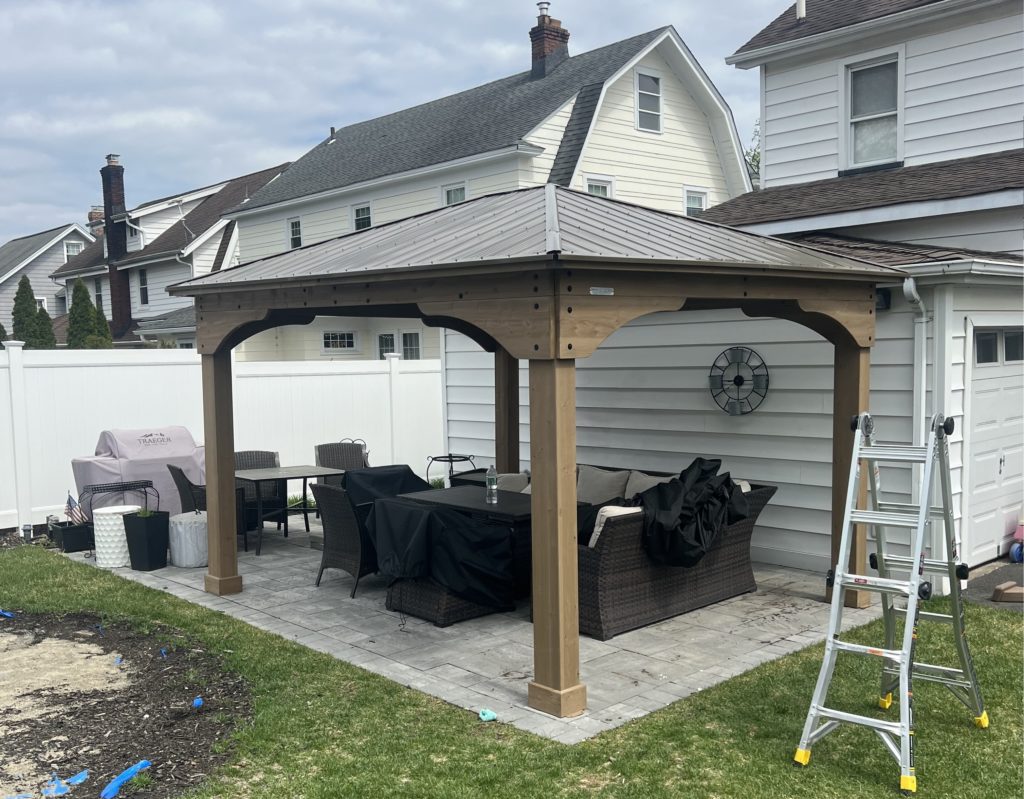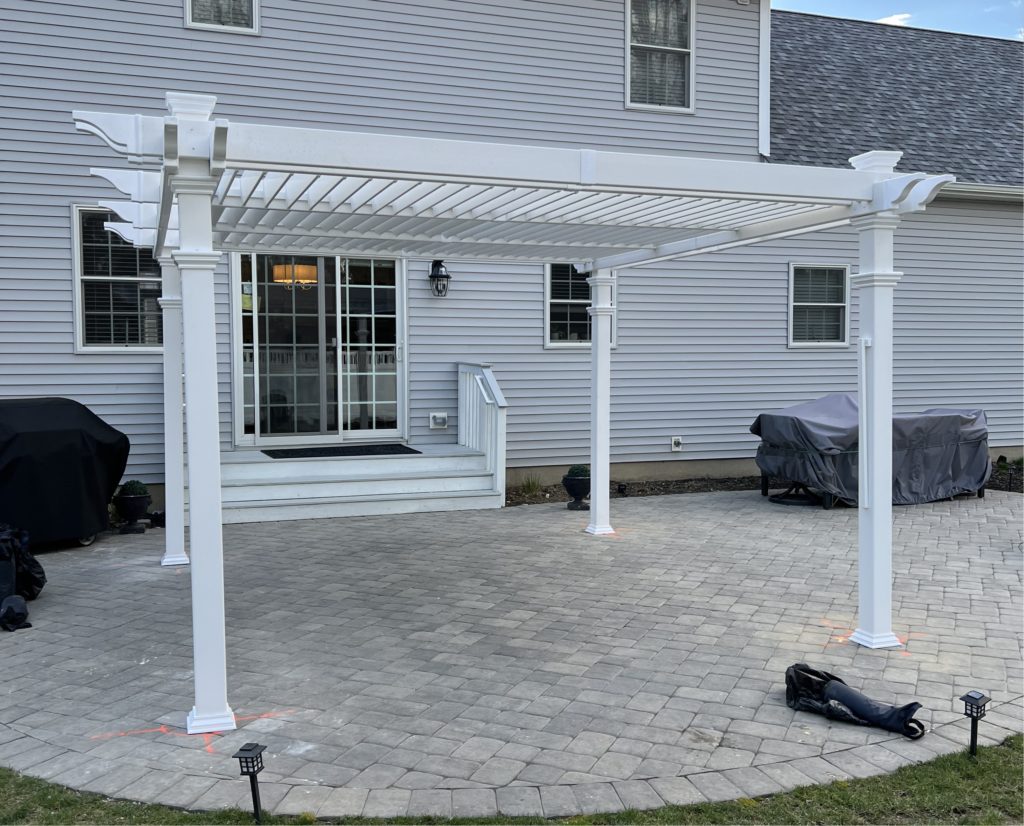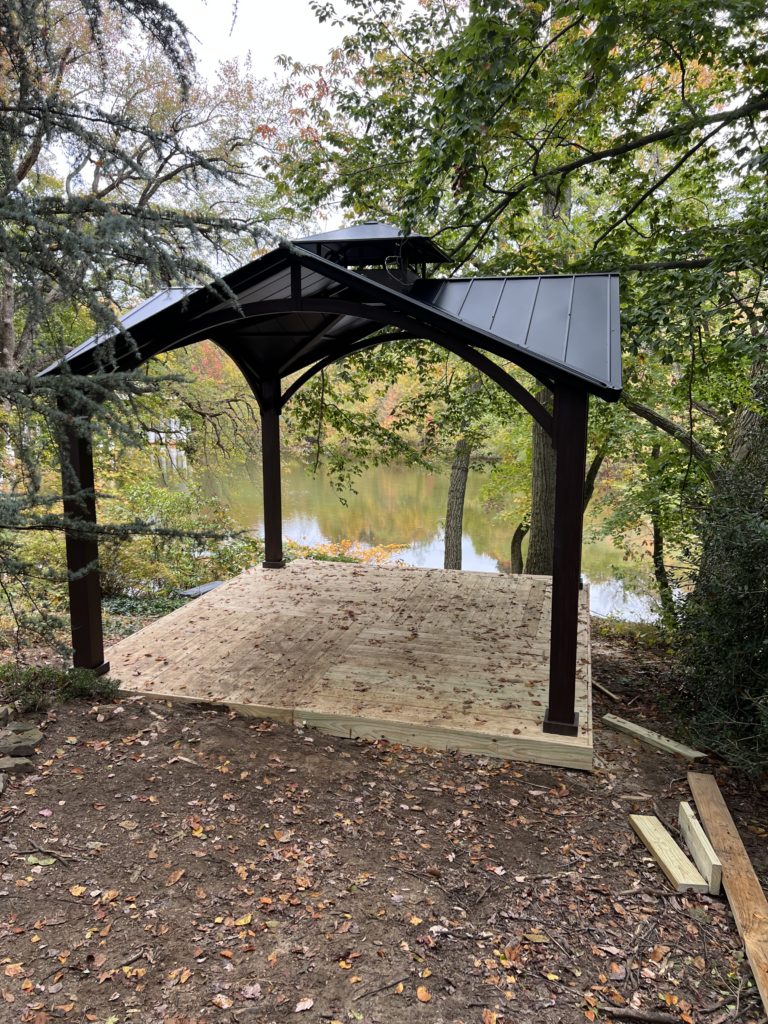If you’re looking to add comfort and style to your home or office in Piscataway NJ, a ceiling fan can be a great investment. Whether you want to cool down a room during the hot summer months or just improve the air circulation, a ceiling fan can make a significant difference. However, proper installation, replacement, and repair of ceiling fans require expertise and experience.
OUR CONTACT
Email Support:
info@gazebo-installation.com
Ask your question:
info@gazebo-installation.com
Some of Our Portfolio Gazebo and Pergola Assembly Projects



At our professional ceiling fan installation, replacement, and repair service in Piscataway NJ, we have a team of skilled technicians who can handle any ceiling fan project, big or small. Whether you need a new ceiling fan installed, your current fan replaced, or a malfunctioning fan repaired, we have the knowledge and tools to get the job done efficiently and effectively.
When it comes to ceiling fan installation, our experts understand the importance of ensuring proper wiring, mounting, and balance. Incorrect installation can lead to noise, wobbling, or even safety hazards. Our technicians will carefully assess your space and provide recommendations on the size and type of fan that would work best for your needs and the surrounding area.
If your existing ceiling fan is outdated, malfunctioning, or simply not meeting your expectations, our team can handle the replacement process. We will safely remove your old fan and install a new one, ensuring that all electrical connections are secure and the fan functions optimally. Our technicians will also take the time to answer any questions you may have and provide tips on maintenance and operational features of the new fan.
In case you’re experiencing issues with your ceiling fan, such as irregular spinning, no power, or strange noises, our repair service can help. Our technicians will diagnose the problem, identify the faulty components, and perform the necessary repairs to get your ceiling fan back in working order. We have access to a wide range of replacement parts, ensuring quality repairs and longevity.
At our ceiling fan installation, replacement, and repair service in Piscataway NJ, we prioritize customer satisfaction and provide top-notch service at competitive prices. Whether you’re a homeowner or a business owner, our reliable and efficient technicians will ensure your ceiling fan is installed, replaced, or repaired to perfection, creating a comfortable and stylish atmosphere in your space.
Ceiling Fan Installation: The Key Steps for a Successful Job in Piscataway NJ
Installing a ceiling fan is not only a great way to enhance the comfort and aesthetics of your home in Piscataway NJ, but it can also help you save on energy costs. However, to ensure a successful installation, it is important to follow the key steps carefully.
Step 1: Preparation
Before installing a ceiling fan, it is crucial to gather all the necessary tools and equipment. These may include a ladder, screwdrivers, wire strippers, pliers, and a voltage tester. Additionally, ensure that the power to the area where the fan will be installed is turned off for safety purposes.
Step 2: Mounting the Fan
Begin by assembling the fan according to the manufacturer’s instructions. Then, locate the ceiling joist or support structure to securely mount the fan. Use a stud finder if needed. Once the mounting bracket is in place, attach it securely with the provided screws. Ensure that the bracket is level and stable before proceeding.
Step 3: Wiring and Electrical Connections
Next, carefully follow the wiring instructions provided by the manufacturer. This may involve connecting the fan’s wires to the corresponding wires in the ceiling, which typically include the ground, neutral, and live wires. It is advisable to use wire connectors and electrical tape to ensure secure connections. Once the wiring is completed, use a voltage tester to confirm that there is no electricity flowing to the fan.
Step 4: Fan Blade Installation
Attach the fan blades to the motor housing according to the manufacturer’s instructions. Take note of any blade balancing recommendations to ensure smooth and quiet operation. It is important to tighten the blade screws securely but avoid over-tightening.
Step 5: Test and Finishing Touches
Before turning the power back on, double-check all the connections and ensure that the fan is securely mounted. Once everything is in place, turn the power back on and test the fan’s functions, including the speed settings and any additional features such as lighting. Check for any noises or wobbles and make any necessary adjustments or tightening. Finally, clean up the installation area and enjoy the comfort and beauty of your newly installed ceiling fan in Piscataway NJ.
Assessing the space and selecting the right fan
When it comes to installing, replacing, or repairing a ceiling fan in Piscataway, NJ, it is crucial to assess the space where the fan will be installed and select the right fan accordingly. The size of the room, height of the ceiling, and the overall aesthetic of the space should all be taken into consideration. By evaluating these factors, you can ensure that the selected fan offers optimal performance and enhances the overall look of the room.
Size of the room: The size of the room plays a significant role in determining the size of the ceiling fan. A larger room will require a larger fan to effectively circulate air. In contrast, a smaller room will require a smaller fan to prevent overpowering the space. It is essential to measure the square footage of the room and consult a fan sizing chart to determine the appropriate fan size for optimal air circulation.
Height of the ceiling: Ceiling height is another crucial factor to consider when selecting a ceiling fan. The fan should be installed at a height that allows for proper air circulation while maintaining a safe distance from the floor. For higher ceilings, extended downrods may be needed, while for lower ceilings, flush or hugger mounts can be utilized to maintain sufficient clearance.
- Overall aesthetic:
The style and design of the ceiling fan should complement the overall aesthetic of the room. There are various fan designs available, ranging from traditional and classic to modern and contemporary. Consider factors such as the room’s theme, color scheme, and existing decor elements when selecting a fan. This will ensure that the fan not only serves its functional purpose but also adds to the overall visual appeal of the space.
In conclusion, assessing the space and selecting the right fan involves evaluating factors such as the size of the room, ceiling height, and overall aesthetic. By considering these aspects, you can choose a ceiling fan that meets your needs in terms of air circulation, safety, and visual appeal. Consulting a professional in ceiling fan installation, replacement and repair in Piscataway, NJ can provide valuable guidance in selecting the right fan for your specific requirements.
Gathering the necessary tools and materials
Before starting any ceiling fan installation, replacement, or repair project in Piscataway NJ, it is important to gather all the necessary tools and materials to ensure a smooth and successful process. Having the right equipment will not only make the task easier but also ensure the safety and efficiency of the project.
Tools:
- Screwdriver set: A set of screwdrivers with different sizes and types will be required for removing and installing screws.
- Wire stripper: This tool will be needed to strip the insulation from the wires.
- Voltage tester: A voltage tester will help determine if there is any electrical current present in the wires.
- Drill: Depending on the type of fan and the installation requirements, a drill may be necessary to create holes for mounting and wiring.
- Wire connectors: These connectors are essential for joining wires together securely.
- Wire nuts: Wire nuts are used to connect and protect the exposed wire ends.
- Tape measure: A tape measure will help ensure precise measurements for installing the fan at the desired height and location.
Materials:
- Ceiling fan: The main component of the project, the ceiling fan should be chosen based on the size and style preferences.
- Electrical box: An electrical box will be needed to safely support the weight of the fan and secure it to the ceiling.
- Mounting bracket: This bracket is used to attach the fan to the electrical box.
- Mounting screws: The appropriate screws will be required to secure the mounting bracket to the electrical box and the fan to the bracket.
- Wire nuts: Additional wire nuts may be needed to connect the fan’s wires to the electrical box wires.
- Wire connectors: Depending on the electrical box’s requirements, separate wire connectors may be necessary.
- Electrical tape: Electrical tape can be used to secure and protect the connected wires.
- Instruction manual: Every fan comes with an instruction manual that should be thoroughly read and followed during the installation, replacement, or repair process.
Wiring and Electrical Connections
Proper wiring and electrical connections are crucial for the safe and efficient operation of a ceiling fan. When installing, replacing, or repairing a ceiling fan in Piscataway NJ, it is important to follow the relevant electrical codes and guidelines to ensure a reliable and secure connection.
Before beginning any wiring work, it is essential to turn off the power supply to the ceiling fan circuit. This can be done by switching off the corresponding circuit breaker in the electrical panel or by disconnecting the fuse. It is also advisable to use a voltage tester to double-check that the power is indeed off before proceeding with any wiring connections.
Key points to consider when dealing with the wiring and electrical connections of a ceiling fan:
- Ensure that the wires are properly stripped and undamaged before making any connections. Damaged wires can lead to short circuits and other electrical problems.
- Use wire nuts or electrical connectors to secure the connections between the fan’s wires and the household electrical wires. This helps to prevent loose connections that can cause arcing and overheating.
- Follow the manufacturer’s instructions for the correct wiring configuration. Different ceiling fans may have different color-coded wires or unique wiring diagrams.
- Securely fasten the grounding wire to the fan’s housing and connect it to the grounding conductor in the electrical box. This provides an important safety feature and helps protect against electrical shocks.
- After completing the wiring connections, carefully tuck and organize the wires to ensure they are not pinched or damaged by the fan’s moving parts.
It is worth noting that electrical work, including wiring a ceiling fan, can be complex and potentially dangerous. If you are unsure about any aspect of the installation, replacement, or repair process, it is recommended to consult a professional electrician to ensure the job is done safely and correctly.
OUR CONTACT
Email Support:
info@gazebo-installation.com
1126 Falls Terr, Union NJ 07083
Ask your question: info@gazebo-installation.com